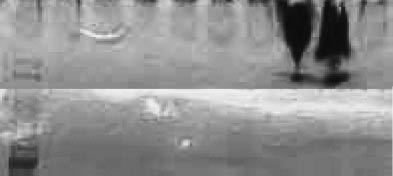Microsoft word - 3c868221-3714-0574.doc
Thrash, I. & Derry, J.F. (1999) The nature and modelling of piospheres: a review. Koedoe 42 (2): 73-94. Pretoria. ISSN 0075-6458. REVIEW OF LITERATURE ON THE NATURE AND MODELLING OF PIOSPHERES I. Thrash and J.F. Derry A piosphere is an ecological system of interactions between a watering point, its surrounding vegetation and the grazing animal. In the simplest case of an isolated
 Biosci. Biotechnol. Biochem., 70 (7), 1794–1797, 2006
Genetically Engineered Poly--glutamate Producerfrom Bacillus subtilis ISW1214
Makoto ASHIUCHI,y Kazuya SHIMANOUCHI, Terumi HORIUCHI,Tohru KAMEI, and Haruo MISONO
Department of Bioresources Science, Kochi University, Nankoku, Kochi 783-8502, Japan
Received February 13, 2006; Accepted April 4, 2006; Online Publication, July 23, 2006
The pgsBCA-gene disruptant from Bacillus subtilis
a domestic strain very useful in gene engineering,13)
ISW1214, i.e., MA41, does not produce poly--gluta-
which harbors no plasmid DNA.14) It, however, has
mate (PGA). We newly constructed an MA41 recombi-
remained obscure about whether the ISW1214 strain
nant bearing the plasmid-borne PGA synthetic system,
cannot produce PGA as well as the 168 strain.11) Then
in which PGA production was strictly controlled by the
we examined the polymer productivity of B. subtilis
use of xylose. Unlike the parent strain, ISW1214, the
ISW1214. Growing cells (wet weight, 0.4 g) of B. sub-
genetically engineered strain produced abundant PGA
tilis ISW1214 were first inoculated into the following
in both L-glutamate-rich and D-glutamate-rich media.
Biosci. Biotechnol. Biochem., 70 (7), 1794–1797, 2006
Genetically Engineered Poly--glutamate Producerfrom Bacillus subtilis ISW1214
Makoto ASHIUCHI,y Kazuya SHIMANOUCHI, Terumi HORIUCHI,Tohru KAMEI, and Haruo MISONO
Department of Bioresources Science, Kochi University, Nankoku, Kochi 783-8502, Japan
Received February 13, 2006; Accepted April 4, 2006; Online Publication, July 23, 2006
The pgsBCA-gene disruptant from Bacillus subtilis
a domestic strain very useful in gene engineering,13)
ISW1214, i.e., MA41, does not produce poly--gluta-
which harbors no plasmid DNA.14) It, however, has
mate (PGA). We newly constructed an MA41 recombi-
remained obscure about whether the ISW1214 strain
nant bearing the plasmid-borne PGA synthetic system,
cannot produce PGA as well as the 168 strain.11) Then
in which PGA production was strictly controlled by the
we examined the polymer productivity of B. subtilis
use of xylose. Unlike the parent strain, ISW1214, the
ISW1214. Growing cells (wet weight, 0.4 g) of B. sub-
genetically engineered strain produced abundant PGA
tilis ISW1214 were first inoculated into the following
in both L-glutamate-rich and D-glutamate-rich media. Kimura, K., Tran, L.-S., and Itoh, Y., Roles and
M 1 2 3 4 5 6 7 8 9
Kimura, K., Tran, L.-S., and Itoh, Y., Roles and
M 1 2 3 4 5 6 7 8 9